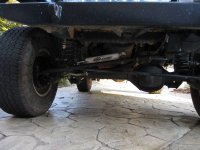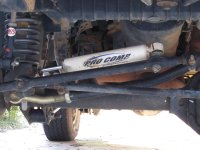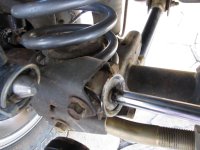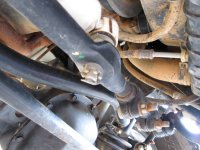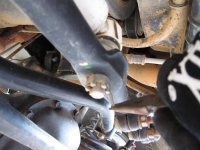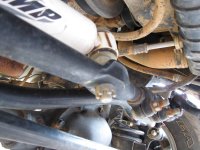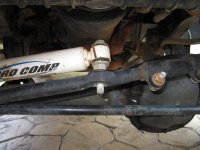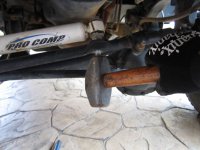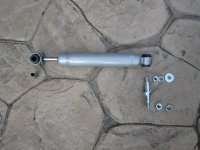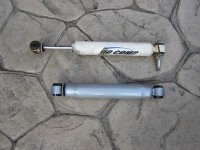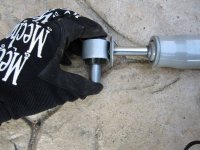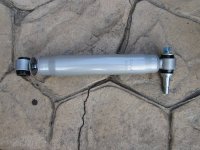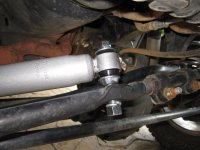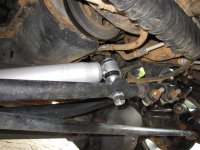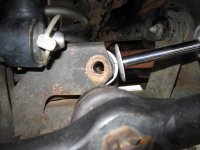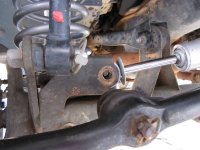Replacing the steering stabilizer on your Jeep Wrangler is a pretty straight forward process, and a great way to get your feet wet if you're new to working on Jeeps. The purpose of a stabilizer is to absorb vibrations from the front tires and road without passing them up the steering wheel to you. The stabilizer itself is really just a shock that is mounted horizontally, one end attached to the front axle, and the other end attached to your steering system (via the draglink). Replacing it is just a matter of unbolting the stock one and bolting up the new one.
For this install I choose a Rubicon Express steering stabilizer for no other reason than it's color. It seems like manufacturers only want to make these things in yellow or red - colors that don't look so good on my Green TJ. Rubicon Express is respected company, and since I'm already running their shocks, I figured that everything would match.
I installed this on my 2005 Wrangler TJ SE
For this install I choose a Rubicon Express steering stabilizer for no other reason than it's color. It seems like manufacturers only want to make these things in yellow or red - colors that don't look so good on my Green TJ. Rubicon Express is respected company, and since I'm already running their shocks, I figured that everything would match.
I installed this on my 2005 Wrangler TJ SE
Last edited:

